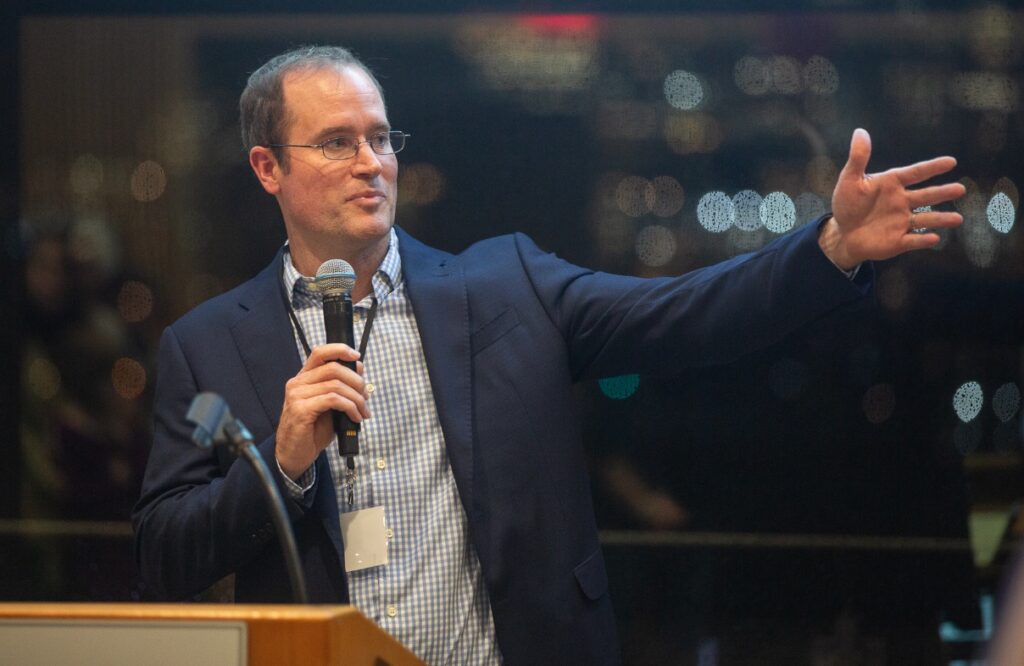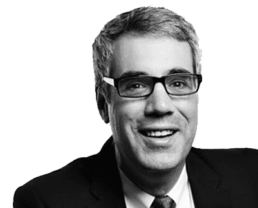The Disciplined Entrepreneurship Toolbox
Stay ahead by using the 24 steps together with your team, mentors, and investors.
Sign up for our newsletter
This past week, you have probably seen that Prince William and Princess Kate visited Boston for their big Earthshot Prize and what a week it was. President Biden and scores of others were on hand for this enormous event. The hoopla from the visit was really quite amazing. What does this have to do with Disciplined Entrepreneurship? Well, actually a lot.
While we entrepreneurs generally don’t care about credentials and titles (read “royalty”) for their own sake, the cause of fighting climate change is one of, if not the most, consequential challenges we face. As such, we applaud William and Kate’s efforts with the Earthshot Prize. Using their platform and access to capital to create incentives and visibility for entrepreneurs working to address this challenge is very helpful.
Almost fifteen years ago, inspired by then MIT President Susan Hockfield, Tod Hynes and I started to work to do something unique with the existing committed players in the MIT energy field, at both the faculty and student levels (including John Deutch, Ernie Moniz, Richard Lester, John Tester, Don Lessard, and more; and probably most importantly the students, including David Danielson, Nol Brown, Joel Moxley, and others too numerous to name). We looked to integrate our expertise in entrepreneurship with the powerful technical and policy capabilities that MIT had in the field to create a specialized lane for students of clean energy entrepreneurship.
This started with a class called “Energy Ventures,” which was built off applying the fundamental framework of launching a company to the energy sector. The course was designed to be interdisciplinary and bring together technical, policy, business, and strategy courses across MIT and Harvard to create a space and structure to develop new startups in the field.
It turned out this was not as easy as we thought it would be, as these two articles about the journey explain (What’s Wrong with Energy Investing Part 1 and What’s Wrong with Energy Investing Part 2). The insights we gained as we dove into it led us to carefully design the Energy Ventures course differently than our other entrepreneurship courses at MIT.
We also had another insight; that we needed to celebrate these entrepreneurs and create a new platform for them to succeed because these ventures were not going to be able to compete with traditional entrepreneurship for short-term recognition. This was the genesis for the MIT Clean Energy Prize, which owes eternal thanks to NSTAR’s and now Eversource CEO Joe Nolan for supporting us at the birthing stage and the first five years of existence.
Fast forward 15 years later and the Energy Ventures Alumni group is now a strong and extremely powerful community of 500+ change makers who continue to help each other in this generational challenge. Alumni have spun off many dozens of companies and organizations like Greentown Labs that have done enormous good for the world. Many alumni are now in government, large corporations, investing groups, academia, and other organizations so the community has expanded well beyond just startup founders.
At the Trust Center, we now work with leaders in Texas on a project called TEX-E to bring this influence beyond just those entrepreneurs getting educated in the Boston area. We have hired our first EIR (Entrepreneur in Residence) dedicated to climate tech, the great Ben Soltoff. He works closely with Greentown Labs, now the biggest clean energy incubator in the world, in both Boston and its new location in Houston. Our center not only continues to support Tod Hynes, Frankie O’Sullivan, Libby Wayman, and Jacquelyn Pless in teaching the continually updated Climate and Energy Ventures course, but we have brought Tod on as a Senior Advisor to our center after his success in the marketplace. The Boston/MIT Clean Energy Innovation Ecosystem is considered the gold standard for building entrepreneurs who can address the two-prong imperative of energy and climate.
So what does this have to do with the English Royalty coming to Boston? Actually a lot.
When it became clear there was an opportunity to bring this high-visibility program to Boston, there were some interesting connection points. (Note that they give out five awards for £1 million each, which gets a lot of attention, but with all the other press and dignitaries and a big party, the eyeballs are even more critical.)
First of all, the Earthshot Prize is based on the concept of the US Moonshot program; i.e., set out a big hairy audacious goal that then helps to align massive resources behind it to make it happen in a dramatically expedited fashion. It all started in September 1962 with President Kennedy’s speech on the subject that said the US will work to land a human on the moon before the end of the decade, which many felt was preposterous. (Note: It is so worth watching that speech again; just click on the link and it has the critical 60 seconds. Amazingly inspirational!) President John F. Kennedy is from Boston and his beautiful library resides in this city. It is the 60th anniversary of that transformative speech and this was not lost on his daughter.
Caroline Kennedy sent a personal letter to the Earthshot Prize selection committee to propose Boston as the site for the prize ceremony in 2022. But more than just a sentimental narrative was needed to be successful. There also had to be a logical narrative and this related directly to the leadership role that Boston has taken in this area. The selection committee was intrigued, but more needed to be done.
The second step was closing the deal in convincing the selection committee that Boston was the proper venue – and the Kennedys turned to Tod Hynes. Tod hosted them at the Trust Center with slides, videos, and visitors. He organized and then gave them a red-carpet tour of MIT and then the city, which he was now working to align behind this bold concept. He was very close with the selection committee and convinced them Boston was the location.

Simply put, while the Kennedys are at the front of the line for making this happen (and there are other players too), it is fair to say that there is no Earthshot Prize in Boston without Tod Hynes. By extension, there is also no Earthshot Prize in Boston without the powerful community that made this region a leader in this field. While you will not see them in the pictures of glitterati, I could care less. They are the real heroes here in my mind. It was a fifteen-year overnight success. Everyone shows up for the party but the hard work was done well before.
It’s dangerous to do so because I will leave someone off the long list of so many extremely deserving individuals, but I will still make a call out to a few who have contributed so much to this effort yet were not mentioned above: Alex Prather, Emily Reichert, Lara Cottingham, Brian Korgel, David Baldwin, Barbara Burger, Michael Kearney, Alicia Carelli, and Susan Neal.
Thanks to all whether named or not. And now you know how DE helped to get Prince William and Kate to Boston and all the other commotion. Still blows my mind. What we create can really change the world. Believe.
PS: By the way, winning these prizes can be overrated. Working hard to try to win them and creating a dedicated team that is able to achieve initial escape velocity, whether it wins or not, has been shown to be the real gold that comes out of these competitions. More often than not, the entrepreneurs who don’t win end up being the most impactful and the competition just got them going. Still, I can’t help myself from sharing that one of our student teams, Takachar, was one of the five winners in the first round of Earthshot Prizes, and came out of our Energy Ventures course. So proud of them.
The author
Bill Aulet
A longtime successful entrepreneur, Bill is the Managing Director of the Martin Trust Center for MIT Entrepreneurship and Professor of the Practice at the MIT Sloan School of Management. He is changing the way entrepreneurship is understood, taught, and practiced around the world.

The books
This methodology with 24 steps and 15 tactics was created at MIT to help you translate your technology or idea into innovative new products. The books were designed for first-time and repeat entrepreneurs so that they can build great ventures.

How relevant was this article to you?
Click on a star to rate it!
Average rating 4.5 / 5. Vote count: 8
No votes so far! Be the first to rate this post.
We are sorry that this article was not useful for you!
Let us improve this post!
Tell us how we can improve this post?
